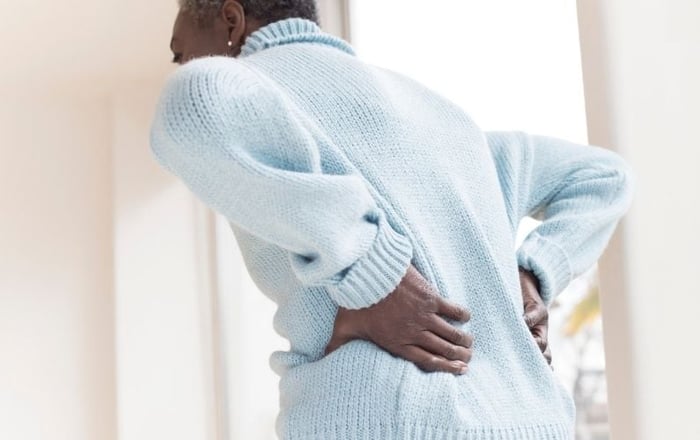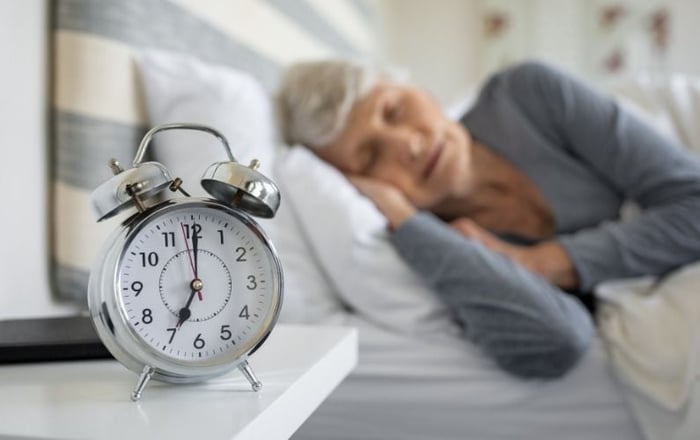Proper bone density helps support your daily activities. Here are some osteoporosis treatment methods you can try at home.
Every bone in your body helps support your activities and lifestyle. If you have poor bone density and health, you can injure yourself more easily, slowing you down.
Luckily there are many osteoporosis treatment and prevention methods. They help build and maintain your bone strength so you can continue to do all the activities and tasks you want.
Keep reading to learn more.
Maintaining Bone Density as You Age: Osteoporosis Treatment and Prevention
Your bones do most of their growing when you're 16 – 18. Once you stop growing, you can enjoy years of optimal bone strength until your mid-thirties. Unfortunately, after this period, your bone density decreases every year.
When your bone health starts to decline, it does so without any real telltale signs. This can be particularly true for women as they begin to develop osteoporosis. Men are fortunate because their bones don't become as brittle so quickly, but they aren't immune either.
This is why practicing osteoporosis treatment and prevention methods is so important. So, what are these methods we keep mentioning? Let's dive in, starting with your diet!
Supplement Smart
Growing up, you probably had constant reminders about drinking milk to grow strong bones. This is good advice as milk is an excellent source of calcium—a mineral that maintains bone health.
Supplementing your diet with calcium is important and easy to do. Vitamin D is also beneficial because it helps your body absorb calcium.
Calcium-rich foods include:
- Milk
- Yogurt
- Canned salmon with bones
- Fortified plant-based beverages

Calcium supplements are a great way to compensate if you aren't getting enough of this mineral from your diet.
Please note that certain vitamins and supplements may not be right for you. Always read and follow the label and consult a healthcare professional for more information.
Calcium Supplements
A product like Jamieson Calcium Citrate + Vitamin D3 is great for promoting bone density. The citrate form is the easiest to digest, and vitamin D3 makes it much easier to absorb.
Those needing more support could enjoy Jamieson's Calcium Magnesium + Vitamin D3. It incorporates the benefits of calcium with those of magnesium. This formula has a 2:1 Calcium to Magnesium ratio with vitamin D3 for optimal absorption.
Jamieson Joint Relief Joint & Bone is another product that promotes bone health. It contains natural eggshell membranes and vitamin D3 to support your bone health. By helping relieve joint pain, it can also promote a more active lifestyle.
Vitamin D intake, when combined with sufficient calcium, a healthy diet, and regular exercise, may reduce the risk of developing osteoporosis.
Stay Active
Supplementation is helpful, but it won't do much if you aren't also physically active. Remember, healthy muscles take on physical strains so your bones don't have to. This is why exercising regularly is so important.
Exercises for Osteoporosis
Don't worry about having to go to the gym to weight lift or do any demanding exercise. You can benefit from fun and gentle forms of exercise such as walking, running, swimming, or playing sports.
These activities help because they cause your muscles to push against your bones. This stimulates the growth of bone tissue. They may also help reduce your risk of falls and injuries.
Need some ideas for where to start? Here are 3 exercises for healthy bones.
When starting a new exercise plan, always consult a healthcare professional first, especially if you have existing injuries or health conditions.
Boost Flexibility
Doing your best to keep your body limber and flexible goes a long way to protecting your bones, too. Indeed, it's equally as important as exercising.
Flexibility allows your muscles to better absorb stresses which protects your bones. A flexible body can take that force and disperse it across different muscles. This saves your bones from bearing the brunt of the impact.
You want rigid bones and loose muscles. When both are rigid, problems occur, and your risk for fractures and breaks increases.
Yoga and pilates are great ways to increase flexibility and tone muscle. These are both great options because they strengthen and stretch your entire body. In fact, a study found that practicing yoga for just 12 minutes a day can reverse bone loss.

Osteoporosis Treatment and Prevention
Healthy bones are vital for a happy and fulfilling life. Without good bone density, it's hard to take on the tasks you do every day.
Thankfully, you can maintain healthy bones by taking calcium supplements, exercising, and stretching.
Click here for more tips on preventing osteoporosis.
References:
- Causes: Age and Bone Strength. Royal Osteoporosis Society. Retrieved from: https://www.healthlinkbc.ca/illnesses-conditions/joints-and-spinal-conditions/osteoporosis
- Osteoporosis. HealthLinkBC. Retrieved from: https://www.healthlinkbc.ca/illnesses-conditions/joints-and-spinal-conditions/osteoporosis
- What Do You Want to Know About Osteoporosis? Healthline. Retrieved from: https://www.healthline.com/health/osteoporosis
- Why Being Flexible Is Great for Your Health. Healthline. Retrieved from: https://www.healthline.com/health/benefits-of-flexibility
- Yoga for Osteoporosis: 5 Beneficial Poses. Healthline. Retrieved from: https://www.healthline.com/health/osteoporosis/yoga-for-osteoporosis#1










